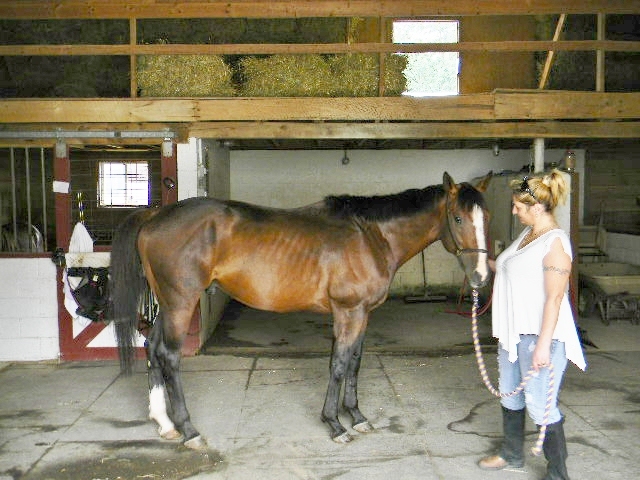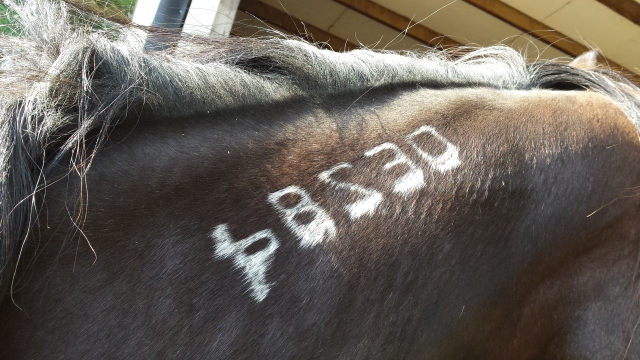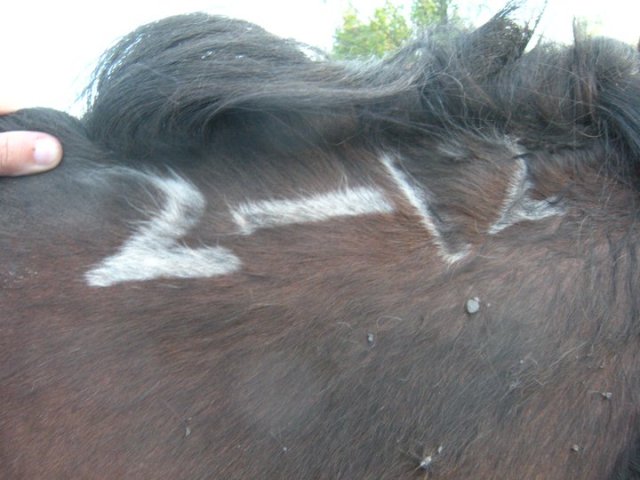QuestionQUESTION: i have a 10 yr old hunter jumper and just recently he started crow hopping. i
have had a chiropractor come and make sure it wasn't a physical issue and he
said it wasn't. he doesnt crow hop while over jumps but after. they aren't
super bad, yet, but it doesnt look pretty and the judges at shows don't like it.
he doesn't do it on the flat, like i said after the jumps. please help me. the
show season stopped for the summer but it starts up again soon. please help
me.
ANSWER: Crow Hopping
The problem you are describing could be a behavioral or a physical problem. You asked the chiropractor and he could not find anything wrong with your horse. Back pain can be non-specific, which means that there is nothing 'wrong' with the back, however it might still be performing inadequately, resulting in e.g. a 'cold back', bucking or an irregular gait. The cause of non-specific poor performance is a topic that vets as well as behaviorists struggle with. It can, however, often be overcome by changing your riding style or adapting the training routine of your horse.
Crow hopping can also be a behavioral problem. However, as your horse does it only after a jump, and started doing it since a short time, I assume it is not purely misbehaving, but it is responding to discomfort. Therefore I would need some more information on the situation before I can give you more specific advice. I will list the main questions that you can ask yourself below.
Since how long have you been riding this horse? You say the horse is 10 years, but if you have not had the horse for a long time, it might respond to the way you ride it or train it. It is essential to land very softly in the saddle after the jump. If you keep standing in your stirrups, keep your weight upwards rather than forwards (chest out, while staying above the saddle). This balances the horse better and gives it stability. It is also essential to keep your legs close to the horse, and to have a constant, yet soft, contact with its mouth, so it feels 'guided'. Ask someone to check from behind if you are balanced on the horse. It might well be that you shift more weight onto one side of the horse, causing stiffness on one side of it's back.
Did you increase the level at which you compete? Maybe your horse is not fit enough to compete on the level you ask it to. Have you spend enough time training before the season started? Jumping fitness can be best trained by up to 5 elevated poles in a row, which the horse has to jump without taking a step between them. To increase the difficulty, elevate 2 of the poles higher than the others. Jump them for example 5 times in a row, then do some basic dressage for 5 minutes, and start over again. It will strengthen the back and belly muscles of the horse, it's hind quarters and increase its cardiovascular fitness.
Did you change anything in the training of the horse? Groundwork is essential to loosen up your horse's back. Make sure your horse moves forward-downwards, if needed assist this movement with lunging aids. This stretches the back. Always make sure your horse has sufficient impulse from behind and does not 'fall' onto it's front legs. Muscles get 'wound up' and doing so, shorten. Stretching is therefore essential. You can also stretch the back muscles before and after riding, by making your horse reach sideways (hold a treat just below one side of the withers, then the other side), down between it's legs (hold a treat between its front hoofs), and by gently pulling its tail. Ensure you are safe when doing so.
Is the saddle still fitting properly? This might change when your horse builds up muscle for example. If in any doubt, get an expert saddle fitter in to check your horse's saddle. Make sure that he sees the horse when jumping (if possible without a rider as well as with a rider) with its saddle on, to see if the saddle falls onto the horse's back just after the jump.
Another important thing is warming up your horse before riding it. It gets its heart rate up and stimulate blood flow the muscles. Make sure you start with 10 min walk (to lubricate all joints), 5 min trot on both hands during which you increasingly collect the horse, and canter for a few minutes on both hands.
Focus on muscle strength besides fitness. Do this by general dressage work. Switch between collecting your horse and riding it forward-downwards, bend your horse a lot and switch gaits regular to keep the forward impulse.
If you're horse makes crow-hops after a jump, drive it forwards strenuously, shift your own weight backwards, and pick up the reigns gently at the same time, collecting the forward impulse so it does not fall on its front limbs. In this way you collect the horse, which makes it harder for him to buck. Never punish it with the whip, as this stimulates this behavior even more. A last thing is never to yank the reigns after a jump, as this will cause an negative response from the horse.
I hope you can sort out the problem before the new season starts.
All the best, Katrina
---------- FOLLOW-UP ----------
QUESTION: thank you for all of your great information. i have owned him for just over
two years and he had any problems till just recently. i have switched stables
and at which they do feed more than at my other stable, so he has gone
under some weight gain. i will indeed take your advice on the saddle fitting!
thank you so much for your help!!!!!!!!!
carly casper
AnswerDear Carly,
I am happy to help! If he had a diet change, it might be excessive energy that causes the problem. Feel free to send me his approx. weight and diet (include treats) and I can let you know if you might have to cut down on some feed. The fact that he put on weight can cause problems with the saddle, but it also will affect hid fitness levels, and maybe his behavior.
Kind regards
Katrina

 orphan foal
Question
Angel
hi, i recently aquired an orphaned foal
orphan foal
Question
Angel
hi, i recently aquired an orphaned foal
 Gelding a 4 year-old ex-racehorse
Questionsplash
QUESTION: In April of this year I
Gelding a 4 year-old ex-racehorse
Questionsplash
QUESTION: In April of this year I
 neck tattoo
Question1st mare
QUESTION: Have 2 mare that I ha
neck tattoo
Question1st mare
QUESTION: Have 2 mare that I ha
 stumbler
QuestionQUESTION: Hi Lyn,
I am also an expert in horse
stumbler
QuestionQUESTION: Hi Lyn,
I am also an expert in horse
 13(?) year old Standardbred mare
Question
Brand
A friend of mine just pulled a mare from
13(?) year old Standardbred mare
Question
Brand
A friend of mine just pulled a mare from